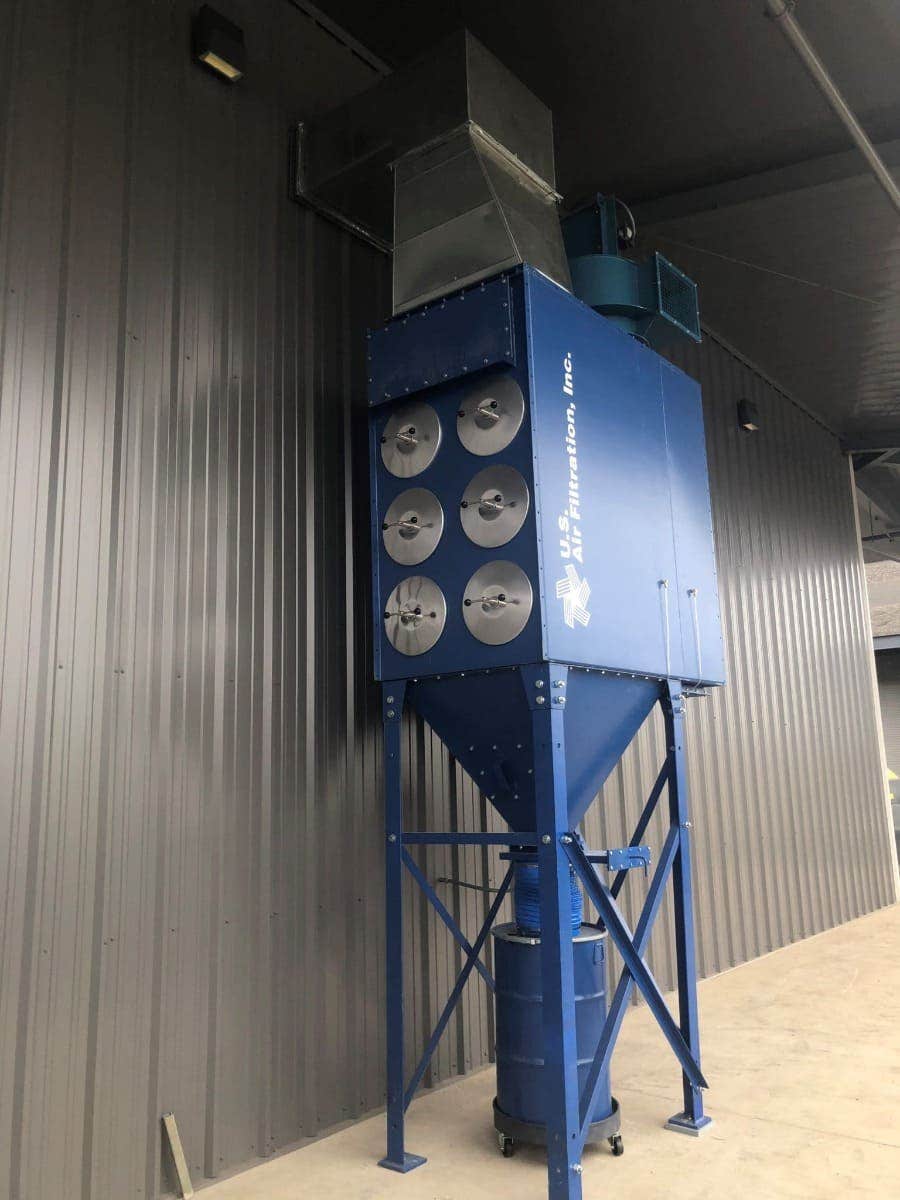Dust Collector Fan Sizing
Industrial fans are used in dust collection systems to push dust-laden air through the filters. Fans can either force a draft (push air) or induce a draft (suck air) through the dust collector. Industrial fans are an essential component to a dust collection system so it’s important to choose the right size fan to make sure you have adequate suction to remove dust from the work environment.
Today we will be helping you size your dust collector fan with this 5-step process. Dust collector fan sizing includes consideration of the following variables.
• Airflow or Cubic Feet Per Minute, commonly known as CFM
• Static Pressure
• Environment & Location
• Power Requirements
• Size & Type of Dust Collector
Airflow or CFM
The first variable you want to consider with dust collector fan sizing is your airflow volume or CFM. CFM stands for cubic feet per minute and measures the amount of air per minute that can be moved from a space. If your CFM is unknown, you can use your pickup points and duct sizing to get started instead.
Static Pressure
The second variable you want to consider is your static pressure. This is defined as the pressure created by a fan or some other source to move air through a ventilation system.
Environment & Location
Next, take a look at your environment and location. Location, temperature, altitude, humidity, and area classification can all affect the size and type of fan that is right for your dust collection system.
- Location - If you are in a humid location this will affect the paint finish of your fan and the fan design.
- Temperature, Altitude, Humidity - When designing a fan these are all variables used to size the right fan wheel. This will ensure you are moving the right amount of air with the right amount of static pressure.
- Environment & Area Classification – Make sure to find out if your environment includes any hazardous area classifications. Area classification is also important to ensure your fan meets the classification requirements.
Power Requirements
A 3-phase fan is commonly used in dust collection applications. You will also need to consider the power requirements of the country in which the fan will be operating. Different countries have different standards.
Size and Type of your Dust Collection System
Lastly, the fan you choose is determined by the size and type of your dust collection system. There are multiple models which handle different volumes.
A top mount or collector mounted fan is typically used on cartridge collectors that handle a range of 1,500-10,000 CFM. Whereas ground mounted models are used on Baghouses and multi-module cartridge collectors where high volumes are required. Typically, up to 290,000 CFM.
If you need help sizing your fan, you can contact one of our equipment specialists at 888-221-0312, email info@usairfiltraton.com or request a consultation here.

Dust Collection Resources
Looking for additional resources on dust collection systems? Get a free download of our Dust Collector Purchasing eBook below. It’s a comprehensive guide organized into key topics such as dust properties, volume, air to cloth ratio, dust collector styles, and more.








